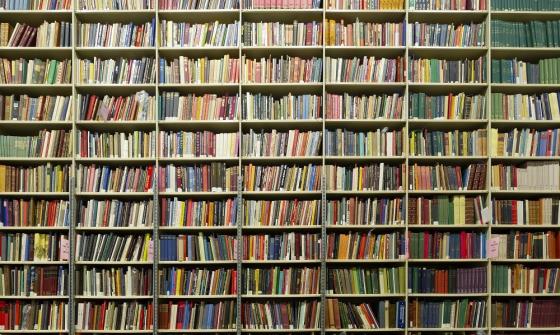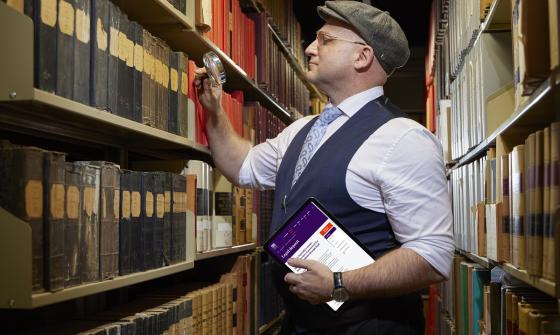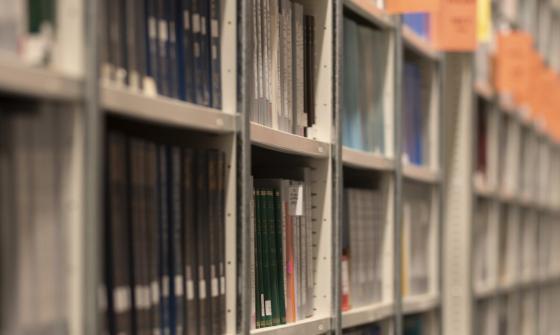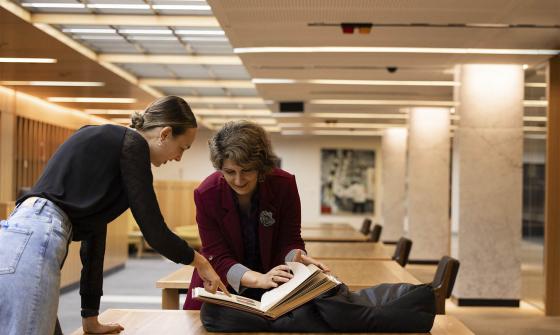Legal deposit
The benefits of legal deposit
By depositing you'll help build the national collection. Once deposited your work will be preserved for future generations. Your publication will help researchers, scholars, and audiences everywhere to understand the Australian experience. Legal deposit collections form a diverse and inclusive picture of the nation and capture what we are thinking, imagining, and writing about over time.
There are over 10 million items in the national collection, and we want Australia's publishers to help us continue to build a comprehensive resource for all Australians to enjoy. Deposited publications reach a large national and global audience through discovery services such as Trove.
What legal deposit means for you
Legal deposit has been a law in Australia for over 100 years. It ensures that the nation's published heritage is collected and preserved for future generations.
One copy of everything that is published in Australia is to be given to the National Library under the legal deposit provisions of the Copyright Act 1968. In 2016 the laws were expanded to include electronic publications. Since then, legal deposit applies to all Australian publications, including:
- books
- graphic novels, comic books, zines
- newspapers, magazines, journals, newsletters
- maps, sheet music
- standalone or annual reports
- government publications
- websites
You don't have to be a publishing professional to be considered a publisher - you might for example be an individual or a community organisation. Legal deposit applies to any Australian person, group or organisation that distributes their work to the public for sale or for free.
Published works that are not required or are only selectively collected include: blank forms and labels; calendars and diaries; activity-based materials such as colouring books, puzzle books and games that do not have significant text; training and procedure manuals; minutes of meetings; teaching and course notes, course workbooks and theses; press releases and trade advertising.
Legal deposit Australia-wide
As well as depositing with us, you need to deposit your publication with your home state or territory library. You can contact your state or territory library to find out more, or review this list of state and territory obligations.
Legal deposit resources
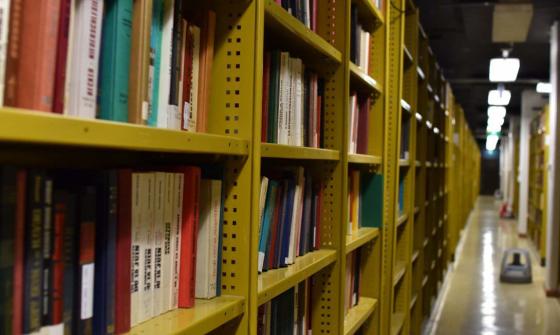
A collection storage area at the National Library of Australia
Video
Write yourself into history with legal deposit
Alice: Hi, I'm here today to talk with you about the largest of the National Library's methods of collection, Legal Deposit, its history, how it has grown, and why it should matter to you. Legal deposit creates a living collection of all published books, graphic novels, newspapers, magazines, community newsletters, self-published works, government publications, maps, sheet music, and more that have been made available to the public for free or for sale in Australia.
In 1905 the first Australian Copyright Act called for two copies of each book to be delivered to the 'Registrar'. If they weren't, then the book would not be protected under copyright law.
This is a copy of the Accession Book of the Parliamentary Library from 1902 to 1906 and here in 1905 we can see the entry for Banjo Paterson's The Old Bush Songs. It is one of our first examples of legal deposit in Australia and here it is still in our collection over 100 years later.
The Copyright Act introduced legal deposit more formally in 1968 when the National Library opened, and that Act, with some amendments, is still in law today – requiring a copy of each book published in Australia to be given to the National Library. Legal deposit is not a requirement for Copyright.
Since 1905, the collection has grown and now includes over 10 million physical publications of which legal deposit has been the largest contributor. You could say it's getting tight!
Matthew: In 2016 Australia's legal deposit laws were extended to include electronic publications, and the first eBook deposited to the national collection was Napoleon's Last Island by Thomas Keneally, published by Penguin Random House. The National edeposit service or NED has been operating since 2019. This is a collaboration between Australia's nine national, state and territory libraries. The NED service provides for the deposit, management, storage, preservation, discovery and delivery of published electronic material across Australia. NED simplifies legal deposit for publishers, as publishers can deposit once and meet their obligations to the National and their state (or) territory library.
For many reasons, we prefer to collect in electronic form where possible, and at the National Library we only require one copy of each publication to be deposited.
Emily: Yeah, but why should I care about Legal Deposit?
Matthew: That's a great question!
Kelsey: The National Library has some amazing staff, and they are working hard to make decisions about what we should collect, and which moments in contemporary Australia should be recorded and kept for future generations. But should that huge responsibility be left completely to us?
Legal deposit is important because it covers everything. There isn't a person or group of people making decisions about what has value, or what should be kept. By its very nature it is an inclusive, diverse, and democratic collection and makes the commitment to preserve our whole story for future generations to find. Let's have a look at where it all starts.
Hi Bing, what's this you are unpacking?
Bing: Oh, I have Yalla-Y-Poora on the Fiery Creek which is published by the Warrnambool and District Historical Society. I also have this book Time of My Life by Myf Warhurst.
Kelsey: So tell me, what happens to them now?
Bing: The books are unpacked and stored on a shelf in a secure mailroom by date of receipt. Then, a cataloguer creates a catalogue record which describes the book so that people can discover the record in our online catalogue. Due to the large volume of books received every day, it can take up to three months for a book to be catalogued. The books are then picked up by our staff and taken to their permanent location in the Library's collection storage areas. We have collections stored in controlled environments in the National Library and in three offsite locations.
Kelsey: And how can people find them in the collection?
Bing: Collection items are discoverable through the National Library Catalogue, and through Trove. Print publications can be accessed in the reading rooms of the National Library.
You can search the catalogue from home and once you have your free Library account you can log in and request the publications you want to view. You'll get a notification when they are ready. Requesting in this way means that when you arrive at the Library, your items are waiting for you, and you won't have to wait while they are brought to the reading room for you. Generally, collection items cannot leave the building.
Kelsey: And, what happens when people deposit electronic versions of publications?
Bing: Depositing through National edeposit or NED is easy and free. Publishers and authors can deposit once and satisfy state, territory as well as national obligations at the same time. You can set conditions of access at the time of deposit, which can range from freely available on the internet to being available as read-only on computers within selected state, territory, and national libraries. In the latter case, a dedicated reading display that prevents sharing of content is used. These access restrictions can be changed later by contacting your NED member library as your needs change.
Kelsey: How big are the digital born collections of the Library?
Bing: At our last count they were over 2.9 petabytes in size. One petabyte is the equivalent of around 500 billion pages of standard printed text. These digital collections include oral histories, pictures collections and websites. Archived websites collected through legal deposit are made available to the public through the Australian Web Archive in Trove and allow future researchers to see content that could otherwise change or disappear over time.
Kelsey: Why should people deposit their published works at the National Library?
Bing: Apart from the legal requirement to do so, many publishers like to deposit knowing that they are contributing to a collection that will be preserved and made accessible for interested readers and researchers for as long as the National Library exists. If you want your publication to be around in 100, 200 years and still (be) accessible through a search engine, depositing your work through legal deposit is the best way to achieve that.
Alice: So how can you deposit your published works? If you have independently published an eligible publication, you can deposit through NED, deliver a print copy by post or by hand to the National Library of Australia.
If you are an Australian author who has traditionally published, you can check if your publisher has deposited your book by searching our catalogue online - if you notice it is missing, encourage your publisher to deposit now.
We have a lot of information, and support relating to legal deposit on our website, just search legal deposit and National Library of Australia in any browser.
If you've published, we invite you to join the biggest written collection in Australia. We're looking forward to caring for your work.
Shirleene: Did you know I've got my publications in the collections of the National Library of Australia?
Alice: Really, That's brilliant! I'll have to give them a read.
